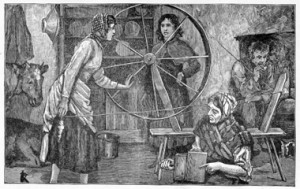Where was your Irish ancestor on the night of March 31, 1901?
If you thought that was a question you might never see answered, think again. Thanks to the National Archives of Ireland, the 1901 census for all 32 counties North and South, is available online.
This is Ireland’s earliest surviving set of census records (the 1911 census also survived intact and was put online a few years ago), but all others beginning with the 1921 records were destroyed long ago. The loss of so many population records, particularly in the 1922 fire at the Public Records Office, makes the existence of the 1901 census all the more precious to researchers today.
Ireland’s unique approach to census taking—the forms were filled out and signed by the actual head of each household on the night of March 31st, known as “census night”—means that the information was provided directly by the family. If the head of household couldn’t write, an enumerator filled it out in front of a witness.
Initially opened to public perusal beginning in 1961, those original forms are now transcribed and indexed exactly as they were filled out, and in this age of immediate internet access, both the transcripts and the originals are able to be accessed 24 hours a day by researchers worldwide.
The records are searchable by any member of a given household, and able to be narrowed down by county, townland or street, district electoral division (DED), and age (plus or minus 5 years is automatically tallied). In fact, if you were so inclined, you could enter just a county name, and call up all the people living in, say, Waterford, in 1901. If you were so inclined…
But the information found on the actual forms themselves is the true gold. Birthplace, marital status, religion and any physical disabilities are all noted. In addition to the basic family page, there are three more forms included for each return; they deal with “religious denomination, classification of buildings and out-offices and farm-steadings, filled out by the Enumerator for that townland/street.”
And just because your ancestors may have already emigrated before 1901 doesn’t mean you won’t find family. All those who stayed behind—parents and grandparents, siblings and cousins—they’re all there in the records, waiting to be discovered at 2 a.m. by a thrilled descendent.
So what are you waiting for? Go see where your Irish ancestor was on the night of March 31, 1901!

